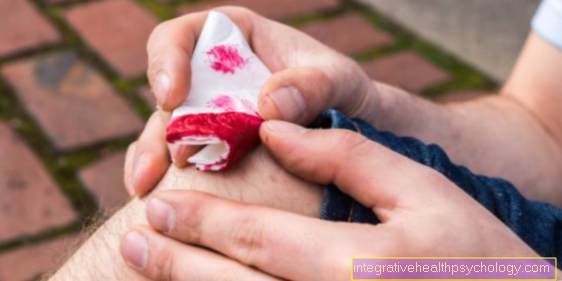Bump behind the ear - what to do?
introduction
A bump behind the ear is any type of palpable or visible swelling behind the ear that can have various causes.
In many cases it is an enlargement of a lymph node, which in turn can be triggered by various circumstances.
In most cases, a bump behind the ear is harmless and will go away on its own.
A doctor should be examined if the bump has persisted for more than two weeks, continues to grow, or if it causes additional symptoms such as pain.
Only in very rare cases does the bump behind the ear indicate a serious disease that requires treatment.
How dangerous a lymph node swelling behind the ear can be, read in our article Lymph node swelling behind the ear - Dangerous?

What are the causes of a bump behind the ear?
A bump behind the ear can be caused by a variety of causes, most of which are harmless.
In many cases, it is caused by swelling of a lymph node from a virus or bacterial infection in the ears, airways, or teeth.
In addition, the sebum glands behind the ear can become inflamed and also cause a bump.
An insect bite can also cause the skin to bulge significantly.
In addition, as everywhere on the body, tissue growths can form behind the ear, which in most cases are benign.
So-called lipomas (adipose tissue growths) are a common example.
Only in very rare cases is a lump behind the ear caused by a dangerous or even malignant disease.
In particular, bumps that appear for no apparent cause, get bigger and cause no pain, should be examined.
In rare cases, it may be a form of cancer that may need treatment as early as possible.
Swelling of the lymph nodes behind the ear
Lymph node swelling is responsible for a lump behind the ear in many cases.
The lymph nodes are control points of the body's own defense system and are distributed in regions all over the body.
Many different causes lead to reactive enlargement of the lymph nodes.
In most cases, there is a harmless viral infection such as a cold.
Rubella is another disease caused by a virus and typically causing swelling of the lymph nodes behind the ear.
This disease should therefore be considered in non-vaccinated children or adults.
Bacterial inflammation of the middle ear or teeth, for example, can also cause swelling of the lymph nodes behind the ear.
In extremely rare cases, however, it is not an infection that is responsible for the bump, but a form of cancer originating from the lymphatic system ("lymph gland cancer").
If the bump is hard and difficult to move, as well as accompanying symptoms such as unwanted weight loss and profuse sweating at night, a doctor should therefore be examined promptly. The same applies if bumps develop in other parts of the body due to swelling of the lymph glands, such as in the groin or under the arms.
This is the therapy for a bump behind the ear
Treatment for a bump behind the ear depends on the trigger that is causing the swelling.
Since in most cases this is an accompanying reaction of the lymph nodes, the therapy depends on the causal inflammation.
In the case of a cold or other illness caused by viruses such as Pfeiffer's glandular fever, treatment is only provided through physical rest and sufficient fluid intake.
Antibiotic therapy may be appropriate for an infection caused by bacteria, such as an inflammation of a tooth.
In the case of bumps behind the ear that arise for no apparent cause, it is often necessary to wait and see.
If the bump doesn't change and doesn't cause discomfort, often no treatment is needed. In many cases, the bump will resolve on its own.
However, if this occurs due to an illness, various treatment measures may be necessary depending on the diagnosis, including surgical removal of the bump.
Only a large abscess (encapsulated, purulent inflammation) is relieved by the doctor directly through a puncture under sterile conditions.
Read more about treating an abscess on the ear at: Abscess on / in the ear - therapy of the boil
These are the accompanying symptoms
The most common accompanying symptom of a bump behind the ear is pain.
Both with lymph node swelling due to inflammation and with encapsulated inflammation of a hair root (abscess) there is usually throbbing pain that is intensified when the head is touched, pressed or moved.
Other accompanying symptoms can include reddening and overheating of the swelling. In the case of an abscess, whitish or yellow pus can also shine through the stretched skin on the bump behind the ear.
If the accompanying symptom is fever, unwanted weight loss or you sweat unusually heavily at night, you should consult a doctor promptly.
In connection with the bump behind the ear, it could be a sign of an infectious disease that needs treatment or even a malignant disease.
Symptoms without pain
While bumps behind the ear are often painful, in some cases they occur without pain.
Different triggers are possible causes.
On the one hand, it can be a benign growth that starts, for example, from adipose tissue and is then referred to as a lipoma.
You can recognize it by its soft, springy consistency.
In addition to other possible harmless causes, a bump behind the ear that occurs without pain and no recognizable trigger should also be thought of as a serious illness. In particular, if the bump is getting bigger or has existed for several weeks, a doctor should be consulted for clarification.
Even if potentially dangerous diseases such as an infectious disease or cancer are very rare, the chances of a cure are highest if therapy is initiated in good time.
In most cases, however, the all-clear can be given and the bump behind the ear does not need treatment or further attention.
In some cases, surgical removal can only be considered if it is bothersome.
The diagnosis of a lump behind the ear
For the diagnosis of a bump behind the ear, a medical consultation and a targeted physical examination are crucial.
The doctor will first ask questions such as when the bump has existed, whether it is causing pain, and whether there are any other symptoms.
Questions about previous illnesses and medication that you are constantly taking can also be important.
During the examination, the doctor will initially only look at the bump behind the ear.
Next, he will carefully feel for its consistency and, if necessary, its mobility.
In most cases, the measures mentioned are then sufficient to make a diagnosis. In some cases a blood test is also required.
Imaging methods such as ultrasound are also used in some cases and can provide further information about the nature of the bump behind the ear and thus provide information for the diagnosis.
How long does a bump persist behind the ear?
It is not possible to make a general statement about the duration of the bump on the ear, as it can vary greatly due to the multitude of possible causes.
If the lymph node swelling is a reaction to inflammation or a cold, the bump usually disappears within a few days after the disease has healed.
In some cases, however, these remain palpable over the long term.
Some bumps don't go away either, but they don't change either.
Usually these are benign growths that do not require treatment.
However, if there is a bump behind the ear for more than two weeks, it should be examined by a doctor.
The same applies to severe complaints and if the bump is getting bigger and bigger.
The following articles may also be of interest to you:
- Swelling Behind the Ear - What Are the Causes?
- Boils in the ear - how dangerous is it?
- Swelling - what's behind it?
- What diseases of the ear are there?





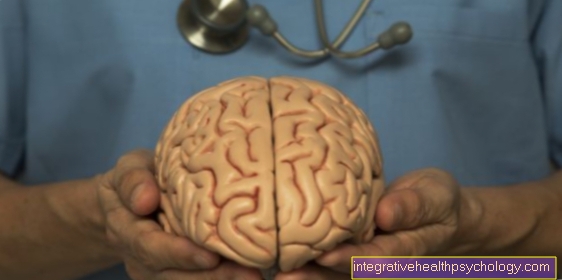

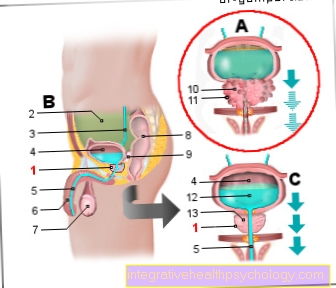
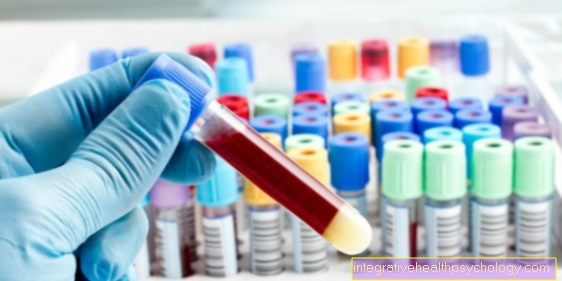





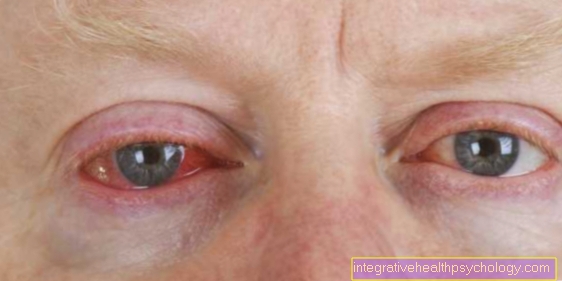

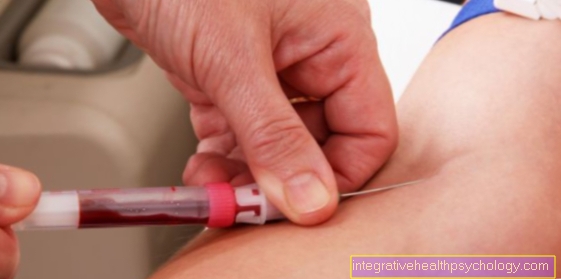

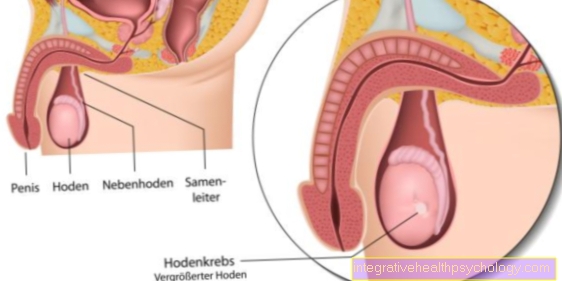

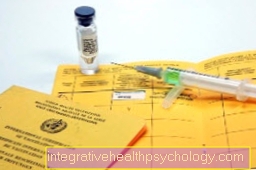

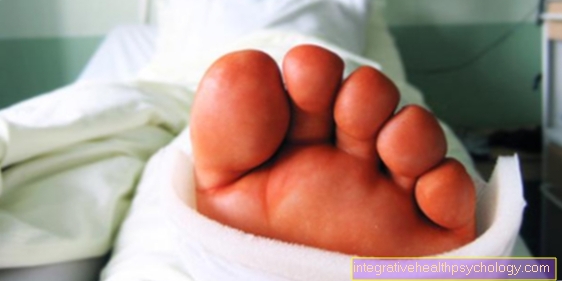

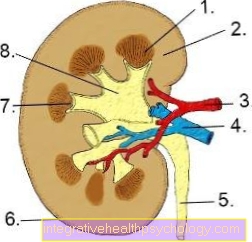
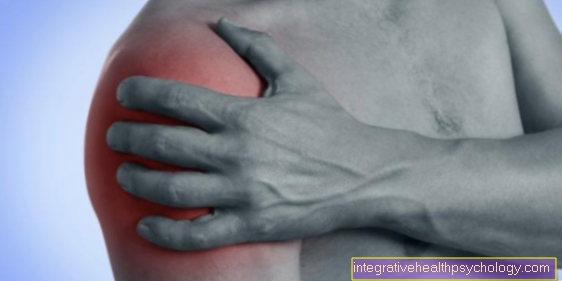
.jpg)


